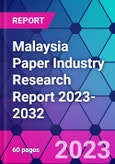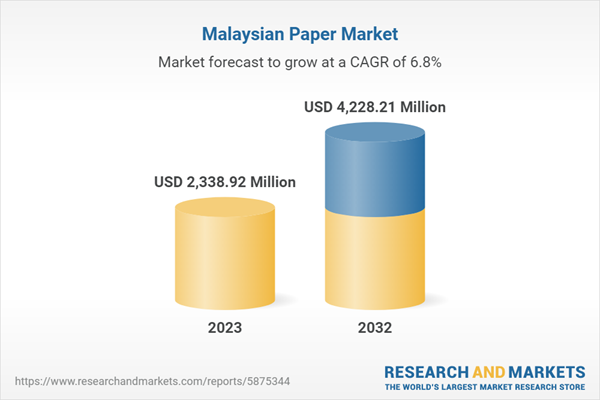The Malaysian paper industry has emerged as a notable player in this global landscape, attracting prominent companies that employ advanced production processes and high-tech automated machinery, supported by a well-developed and advanced supply chain. In recent years, the performance of the Malaysian paper industry has remained stable, thanks in part to the establishment of overseas operations in Malaysia by Chinese pulp and paper companies. Leveraging Industry 4.0 technology, these companies have adopted environmentally friendly production methods while enhancing their monitoring and maintenance capabilities. By aligning Malaysian facilities with these advanced technologies and processes, the Malaysian paper industry can further develop and modernize its production techniques.
Within Malaysia, the paper industry comprises three main subsectors: pulp manufacturing, paper and paper products, and printing and publishing. The industry is particularly dominated by packaging papers, including kraft paper, corrugated paper, and boxboard. Leading producers in this sector include GS Paper & Packaging, Muda Paper Mills, and Pascorp Paper Industries. Notably, the industry is increasingly turning to biomass as a feedstock for paper production, with companies like Eco Palm Paper pioneering the use of Empty Fruit Bundles (EFB) for paper production.
From 2018 to 2022, the export value of paper and paper products in Malaysia exhibited a fluctuating yet generally upward trend, with a Compound Annual Growth Rate (CAGR) of 19.05% during this period. Although the industry experienced a slight decline in export value in 2020 due to the Covid-19 pandemic, subsequent years saw varying degrees of growth. In 2022, the export value of Malaysia's paper and paper products reached US$2.19 billion, reflecting a year-on-year increase of 16.82%.
The future of the paper industry in Malaysia appears promising, as the country continues to attract investment interest from top global companies seeking to expand their operations in Malaysia by establishing factories. With the participation of these investors, Malaysia's paper production capacity is expected to experience exponential growth. The nation is poised to become a significant exporter of paper packaging products in Southeast Asia.
The analysis's predictions indicate that the Malaysian paper industry will continue its growth trajectory, with exports on the rise throughout the 2023-2032 period. the analyst anticipates that Malaysia's export value of paper and paper products will reach US$4.23 billion by 2032, growing at a Compound Annual Growth Rate (CAGR) of 6.8% from 2023 to 2032.
Topics covered:
- Malaysia Paper Industry Overview
- The Economic and Policy Environment of Malaysia's Paper Industry
- What is the impact of COVID-19 on the Malaysian paper industry?
- Malaysia Paper Industry Market Size, 2023-2032
- Analysis of major Malaysian paper industry players
- Key Drivers and Market Opportunities for the Paper Industry in Malaysia
- What are the key drivers, challenges and opportunities for the paper industry in Malaysia during the forecast period 2023-2032?
- Which are the key players in the Malaysia Paper Industry market and what are their competitive advantages?
- What is the expected revenue of Malaysia paper industry market during the forecast period of 2023-2032?
- What are the strategies adopted by the key players in the market to increase their market share in the industry?
- Which segment of the Malaysia paper industry market is expected to dominate the market by 2032?
- What are the major unfavorable factors facing the paper industry in Malaysia?
Table of Contents
Methodology
Background research defines the range of products and industries, which proposes the key points of the research. Proper classification will help clients understand the industry and products in the report.
Secondhand material research is a necessary way to push the project into fast progress. The analyst always chooses the data source carefully. Most secondhand data they quote is sourced from an authority in a specific industry or public data source from governments, industrial associations, etc. For some new or niche fields, they also "double-check" data sources and logics before they show them to clients.
Primary research is the key to solve questions, which largely influence the research outputs. The analyst may use methods like mathematics, logical reasoning, scenario thinking, to confirm key data and make the data credible.
The data model is an important analysis method. Calculating through data models with different factors weights can guarantee the outputs objective.
The analyst optimizes the following methods and steps in executing research projects and also forms many special information gathering and processing methods.
1. Analyze the life cycle of the industry to understand the development phase and space.
2. Grasp the key indexes evaluating the market to position clients in the market and formulate development plans
3. Economic, political, social and cultural factors
4. Competitors like a mirror that reflects the overall market and also market differences.
5. Inside and outside the industry, upstream and downstream of the industry chain, show inner competitions
6. Proper estimation of the future is good guidance for strategic planning.

LOADING...
Table Information
| Report Attribute | Details |
|---|---|
| No. of Pages | 60 |
| Published | September 2023 |
| Forecast Period | 2023 - 2032 |
| Estimated Market Value ( USD | $ 2338.92 Million |
| Forecasted Market Value ( USD | $ 4228.21 Million US |
| Compound Annual Growth Rate | 6.7% |
| Regions Covered | Malaysia |









